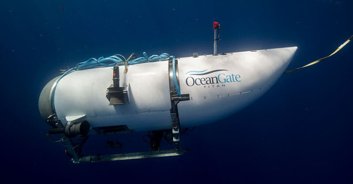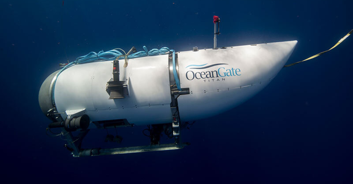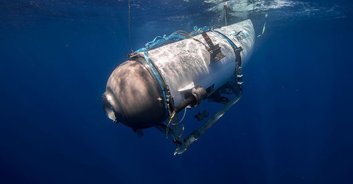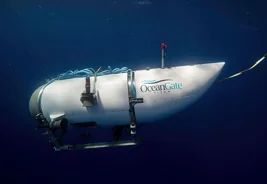The US Navy heard sounds "consistent with an implosion" not long after OceanGate's Titan submersible lost contact, according to a Navy official.
Speaking to CBS News, the official said this information about the "acoustic anomaly" was used by the US Coast Guard to narrow down the radius of the search area. According to CNN, it was thought to be "not definitive" and so the search mission went on as normal.
On Wednesday, the US Coast Guard revealed that a Canadian P-3 aircraft had detected "underwater noises" in a search area for the missing sub.
This renewed hope that the Titan passengers could be found alive and prompted the Coast Guard to relocate operations.
According to CBS News, those sounds are now believed to have been coming from other vessels in the area.
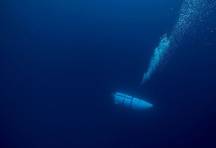
"We now believe that our CEO Stockton Rush, Shahzada Dawood and his son Suleman Dawood, Hamish Harding, and Paul-Henri Nargeolet, have sadly been lost," Titan sub operator OceanGate said in a statement.
"These men were true explorers who shared a distinct spirit of adventure, and a deep passion for exploring and protecting the world's oceans. Our hearts are with these five souls and every member of their families during this tragic time. We grieve the loss of life and joy they brought to everyone they knew."
Coast Guard Rear Admiral John Mauger said it is not yet clear if the deceased victims can be recovered.
"This is an incredibly unforgiving environment down there on the seafloor, and the debris is consistent with a catastrophic implosion of the vessel," he said. "We'll continue to work and search the area down there."
On Sunday (June 18), several outlets reported that an underwater vessel - known as the Titan - had lost contact with its mothership "Polar Prince" after traveling deep into the North Atlantic Ocean with five people on board.
The five passengers trapped inside the submersible included British billionaire Hamish Harding, Pakistani businessman Shahzada Dawood (along with his 19-year-old son, Suleman), French explorer Paul-Henri Nargeolet and finally Stockton Rush - the CEO of OceanGate - which operates the sub.
The expedition was set to embark on a 12,500 feet deep dive to explore the wreckage but the sub failed to provide a signal to its Canadian launch ship just an hour and 45 minutes into the journey, which led to growing concerns from operators.
In the past few days, a major search operation - headed by the US Coast Guard as well as OceanGate Expeditions - has been underway to try to recover the vessel. This was made even more critical as initial estimates stated that the submersible had a 96-hour oxygen supply.

